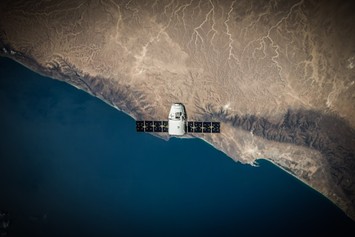
Global Navigation Satellite Systems (GNSS), including commercial GPS, play a crucial role in a wide range of modern applications, with one of the most life-saving uses being in emergency response and search-and-rescue (SAR) operations. By providing precise location data and constant satellite coverage, these systems allow first responders to track and rescue individuals in distress more efficiently, ultimately saving lives during critical situations.
One of the most significant applications of GNSS in SAR operations is its integration with the COSPAS-SARSAT system, a global satellite-based emergency distress beacon detection and location system. This system, alongside other non-navigational satellites, has proven invaluable in locating individuals in distress, even in the most remote or challenging environments.
There are several navigational constellations in operation today, including the U.S. Global Positioning System, the Russian GLONASS, the European Union’s Galileo system, and China’s BeiDou.
GNSS allows users to pinpoint their location with high accuracy, which is critical for SAR operations. Emergency responders rely on satellite data to navigate to the precise location of people in distress, whether they are stranded in the wilderness, lost at sea, or victims of natural disasters.
When it comes to search and rescue operations, time is of the essence. GNSS technology enables faster response times by providing real-time location information to both search teams and rescuers. By knowing the exact coordinates of an emergency situation, rescue teams can quickly mobilize resources and save lives.
The COSPAS-SARSAT system is a global satellite-based search-and-rescue system that was initially developed by the United States, Russia, Canada, and France in the 1980s. The goal of the system is to detect distress signals from emergency beacons and provide accurate location information to SAR authorities, allowing them to respond quickly to emergencies.
GPS plays an essential role in supporting the COSPAS-SARSAT system by providing precise positioning data. When a distress beacon is activated—whether manually or automatically in response to an accident or emergency event—the signal is transmitted to a satellite, which relays the information to a ground station. If the distress signal includes GPS coordinates, it becomes much easier for SAR teams to pinpoint the location of the emergency.
The GPS system, as part of the broader GNSS constellation, has made significant contributions to COSPAS-SARSAT, particularly with regard to its role in offering distress signal detection and accurate positioning. GPS-enabled distress beacons send location data that is vital for SAR operations. Technology embedded in these beacons helps ensure that the position information provided is highly accurate, often to within a few meters.
The United States’ involvement has been critical in advancing the system, particularly in the use of global positioning to enhance the accuracy and speed of rescue operations. Over the years, it has become an integral part of the COSPAS-SARSAT mission, particularly with the launch of new satellites that offer better signal strength, more reliable coverage, and enhanced accuracy in distress situations.
In the event of a distress situation, a GPS-enabled beacon can dramatically reduce the time needed to locate a person in need of assistance, thereby increasing the likelihood of a successful rescue.

While global navigation systems provide essential location-based services for SAR operations, other non-GNSS satellites are also involved in supporting the COSPAS-SARSAT mission. These satellites are primarily used to detect distress beacon signals and relay that information to ground stations, which are responsible for coordinating the rescue efforts.
COSPAS-SARSAT relies on a combination of low Earth orbit (LEO) and geostationary orbit (GEO) satellites to detect emergency signals. These satellites are equipped with sensors that can detect distress beacons operating on frequencies such as 406 MHz, which are commonly used in aviation, maritime, and terrestrial distress situations.
The U.S. has a number of geostationary satellites in place that support the mission. For example, the Geostationary Operational Environmental Satellite (GOES) system provides continuous coverage over the Western Hemisphere, enabling faster detection of distress signals. Additionally, polar-orbiting satellites, such as those in the NOAA and NASA systems, provide global coverage for distress beacon detection.
These work in tandem with GNSS systems to create a robust, global emergency detection and response network. While satellites provide the location data for the distress beacons, non-GNSS satellites detect those signals and relay the information to rescue operations, enhancing the speed and efficiency of rescue efforts.
Since its inception, GPS has played a pivotal role in advancing the capabilities of COSPAS-SARSAT, particularly by improving the accuracy of distress beacon location information. Early distress beacon systems were capable of emitting signals, but their location data was less precise, often resulting in rescue teams having to search a wide area.
As technology evolved, it became possible to include global positioning receivers inside distress beacons. The introduction of GPS-enabled beacons significantly enhanced the COSPAS-SARSAT mission, allowing for near-instantaneous location data. Beacons provide rescue teams with precise coordinates, reducing the area that must be searched and ultimately improving the speed of rescue operations.

In addition to providing accurate location data, satellites have made the COSPAS-SARSAT system more reliable and resilient. The Global Positioning System has undergone continuous improvements, with new satellites being launched regularly to replace older models and enhance the overall system’s performance. This steady evolution has ensured that SAR teams can always rely on positioning data to guide their efforts, even in the most challenging environments.
The GPS system’s role in the COSPAS-SARSAT mission also continues to grow as the U.S. introduces new technologies, including Next Generation GPS (also known as GPS III), which further improves signal integrity, accuracy, and availability. The latest satellites also enhance the system's ability to detect distress signals even in remote or difficult-to-reach areas, expanding the range and effectiveness of SAR operations.
The European Union’s Galileo system has made significant strides in supporting the mission, contributing to global SAR operations for many years. Galileo, Europe’s constellation, became operational in 2016 and has been an integral part of the COSPAS-SARSAT system since its inception.
Galileo’s impact on the COSPAS-SARSAT mission is particularly notable for its ability to provide highly accurate location data. Galileo’s system is designed to complement existing systems, offering an additional layer of coverage and redundancy for search and rescue operations.
One of Galileo’s key contributions has been its ability to provide Global Navigation Satellite System-based emergency distress beacon location services in remote and challenging locations, including areas with limited GPS coverage. Galileo’s constellation has ensured that distress beacon signals can be detected and located more quickly, especially in regions where other systems might have limited coverage.
The European Space Agency (ESA) and the European Union have also been heavily involved in the ongoing development of Galileo, and this includes support for the COSPAS-SARSAT mission. The Galileo system provides search and rescue authorities with a comprehensive, global network of satellite-based resources that improve the detection and rescue of individuals in distress.
The integration of GNSS systems, including GPS and Galileo, with the COSPAS-SARSAT system has revolutionized emergency response and search-and-rescue operations around the world. By providing precise location data from distress beacons, GNSS-enabled systems have made it possible to drastically reduce response times and improve the accuracy of rescue efforts.
The continued evolution of GPS and Galileo, along with the contributions of non-GNSS satellites, ensures that the COSPAS-SARSAT mission remains one of the most reliable and efficient systems for locating and rescuing individuals in distress. Whether in the wilderness, at sea, or following natural disasters, GNSS technology plays a pivotal role in ensuring that emergency responders can quickly and effectively save lives, making it an indispensable tool in modern SAR operations.